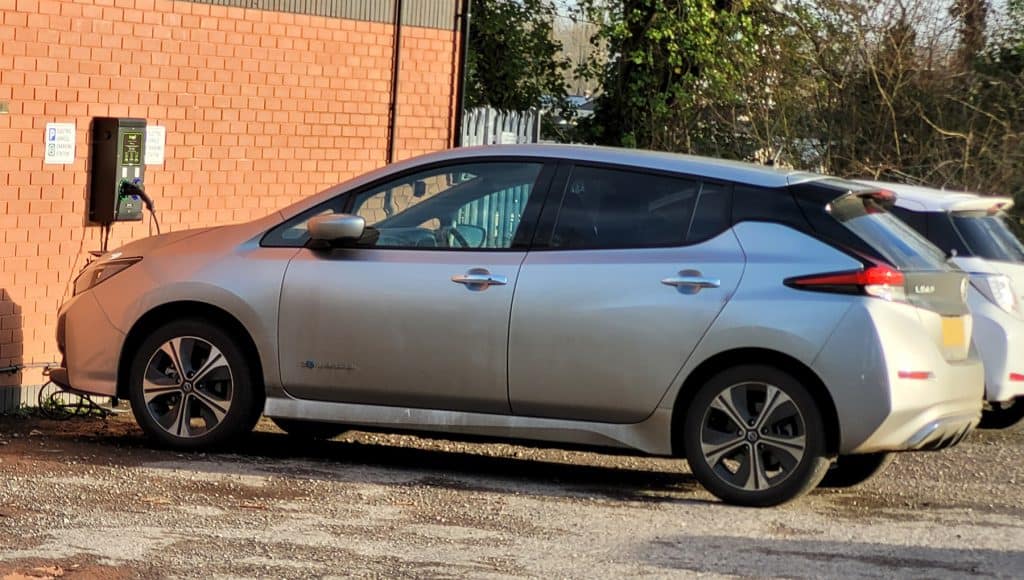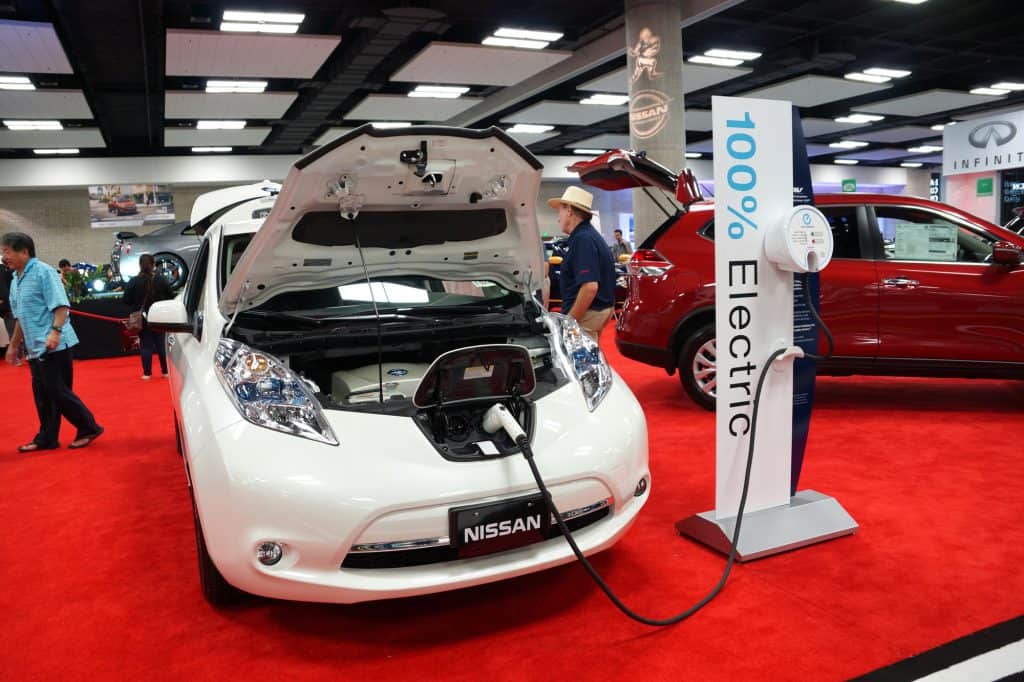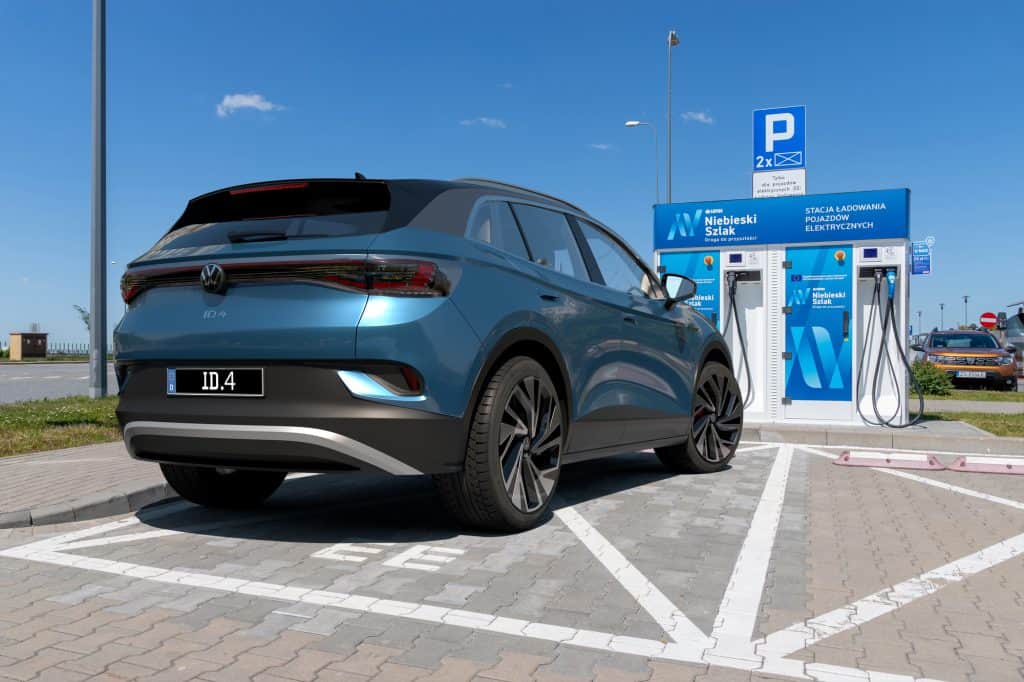The Nissan Leaf is one of the most popular and iconic electric cars anywhere on the market today. Since its launch in December 2010, around 577,000 models have been sold around the world, and the Leaf has been the recipient of numerous awards and accolades.
As a pioneer in mass-produced electric cars, the Nissan Leaf has shown other OEMs what can and will happen with battery-electric vehicles as they enter the market, become pre-owned models, age past a decade and more. As a more affordable alternative to the Tesla Model S, the Leaf was embraced by many who were eager to make the switch to electric-only driving.
In today’s blog, we’ll be taking a closer look in particular at the Nissan Leaf drivetrain, and answering a particular query that many seem to have: is the Nissan Leaf front, rear, or four/all wheel drive?
Nissan Leaf: Drivetrain

Let’s deal with the core question quickly and decisively. The answer is that to date, all Nissan Leaf models have been front-wheel drive (FWD), with the electric motor placed on the front axle driving the front wheels.
This has been the case for all the production span of Nissan Leaf cars, but there is change afoot at Nissan, and not all EV producers share the same enthusiasm for producing FWD models as Nissan does.
What’s the Benefit of Nissan Using FWD?
In the past, rear-wheel drive layouts used to be the norm in most production passenger cars. Why? For the simple reason that the engine was typically rear-mounted, which means that placing a transverse engine and drivetrain means driving the rear wheels.
Over time, engines migrated to the front of the car, making FWD the normal setting for the same reason. It was simply more fuel efficient, and more space efficient. Over time, FWD also made more sense because the added weight of the engine helped keep FWD cars safe while driving in rainy and snowy conditions.
But the Nissan Leaf doesn’t have a front- or rear-mounted engine of any kind, so why bother with the FWD as default? As it happens, EVs have typically used a FWD layout because…they just do. There’s actually no specific or compelling reason for the Leaf or any EV to do so. It’s just a decision they made to mount the electric motor on the front axle rather than the rear one.
For the Leaf, as with other BEVs, the base-mounted battery system gives the car a terrific low center of gravity anyway, and so the previous weight-distribution benefits of FWD are not really required for an EV.
Why, then, hasn’t Nissan made their Leaf more sporty by changing to a RWD system? We’ll look at other OEMs and their EV rear-wheel systems further below, but first let’s look at how Nissan is proposing to change the drivetrain for the leaf. They call it the e-Force AWD system.
What is the Nissan e-Force AWD System?

Nissan’s all-new all-wheel drive system for the Nissan Leaf was first announced back in February 2022. It’s known as e-Force but is actually branded as “e-4ORCE.” Of course, they’re by no means the first EV maker to go AWD, with companies like Tesla long having offered it as an option to their customers, among others.
Where all Nissan Leaf models to date have used a front-mounted electric motor to drive the front axle, the new e-Force system places one on each axle to manage power delivery to all four wheels at the same time. It all sounds quite familiar, but Nissan points out that the system is actually very advanced indeed and is able to respond to drive input “three times faster than the blink of an eye.”
The e-Force system will make full use of its dual motors and regenerative braking to maximize on-road traction, while the system also tries to optimize torque for the front and rear axles. The way that it applies energy through its two motors, according to Nissan, is one of the features that helps set it apart from other dual-motor EV systems.
Head of Nissan’s powertrain and EV engineering division, Ryozo Hiraku, was quoted:
“This technology offers a new level of control…New for Nissan, new for EVs, e-Force control technology is the combination of our know-how of all-wheel drive and chassis control technology and our EV development expertise. E-Force is not a successor of one, but an evolution of many.”
Ryozo Hiraku, Nissan, 2020/06/08
While much has already been speculated about how this technology will apply to the Nissan Leaf, we’ll first see it in action on the upcoming Nissan Ariya, the company’s second mass-market EV in the US, which is set to arrive near the end of 2022 for the 2023 model year.
Significance of e-Force
It’s quite probable that the e-Force technology will be quickly applied to new Leaf models, as well, allowing users to enjoy the benefits of AWD in their electric vehicles. As with other vehicles, it means faster acceleration, better traction, more confidence in drivers, and usually a more fun and spirited drive (although the Leaf’s towing capacity remains fairly low, unfortunately).
Just think of what the quattro system did for Audi cars and their reputation for drivability. The e-Force system could be that same kind of leap that transforms the Nissan Leaf from a more “functional” everyday kind of EV into a more dynamic, sporty and exciting one.
Why Are Other OEMs Looking to RWD as Default for Electric Vehicles?

Another interesting side to this story is seen when we zoom out and take a look at the wider EV market and industry. As we mentioned earlier, the drivetrain of gasoline cars has, for decades now, followed the positioning of the engine. In order not to have cars that were ungainly in size, it was necessary to do that. The greater the distance between powertrain and drivetrain, the less efficient it inevitably is. Therefore, it has always made sense to follow the engine position as default.
Electric vehicles are changing this dynamic completely, however. The electric motors that are used as the drivetrain for EVs are far smaller than those needed for regular gasoline cars. Therefore, it has in practice become irrelevant as to which axle you favor with the engine. Back in 2018, this fact caused one executive at Volkswagen to predict that electric cars might actually be the death knell of all front-wheel drive cars entirely.
Why RWD is Better for EVs
Then head of VW’s e-mobility division in North America, Matthew Renna made these claims when discussing the future of EVs with journalists at the LA Auto Show in November 2018. It was then reported in Motor Trend and on Green Car Reports.
While FWD is not inherently bad for an EV — it’s still widely used — it’s not an option that EV producers are compelled to make for any specific reason, unlike those producing gasoline cars.
When looking at FWD vs. RWD vs. AWD, it’s hard to say, if not impossible, which is objectively better overall. Each drivetrain comes with its own advantages, but there is still good reason to make the claim that for the particular case of EVs, RWD brings benefits that are especially useful.
Earlier we explained why it made sense for most passenger gasoline cars to have a FWD drivetrain because of the added weight of the engine helping make things more safe and stable.
In an EV, however, there’s no engine at either end. In this situation, having a rear-mounted drivetrain is better because it puts power (and control) at the rear, which is where the car’s body weight shifts when accelerating.
On top of that, a rear-wheel drive platform for EVs gives them the added benefit of allowing the front wheels to be used just for steering. That makes for a better overall steering experience, not to mention much better grip when taking right corners. EVs are fast accelerators, by and large, with even entry- and mid-level specification EVs rivaling some Italian supercars when it comes to 0 to 60-mph acceleration times.
Conclusion: Will All EVs Be RWD As Standard in Future?
So, giving drivers the choice of a standard RWD or optional AWD (installing a second electric motor on the front axle), is likely to become the norm in the future. With the weight of the lithium-ion battery helping keep the car grounded, and the added traction and control when taking corners, it could well be the start of a generation of cars that are generally much safer, as well as easier and more fun to drive on different types of roads.
Is there a chance that companies like Nissan will continue offering FWD models? Well, as we’ve said, there’s no reason they shouldn’t if their current design and production allows for that. As seemingly simple as it sounds to place the drivetrain on the rear axle instead of front, it still means design changes to the car and a shift in production process, all of which will cost an OEM millions of dollars to implement.
What will be interesting to see is whether any OEM’s unwillingness to move to RWD as default might present competitive difficulties for them as others make the switch. If VW’s Renna is right, we should see all OEMs making the change sooner or later.